Week 11: Practical Research – Exhibition Design
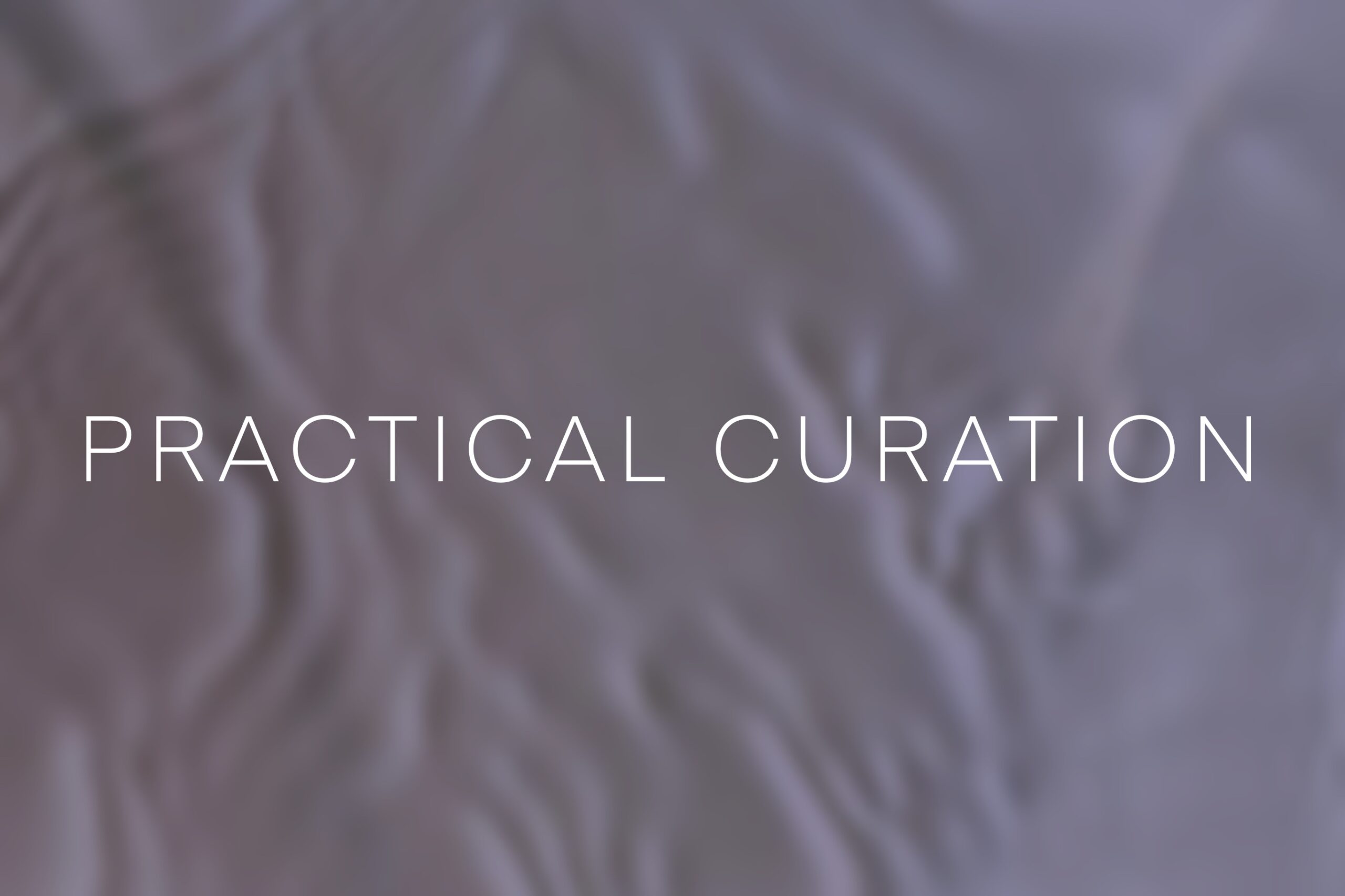
Introduction:
In this post I will be discussing the theoretical influences that I will be considering while developing exhibition designs for the In Vitro gallery space in Summerhall, ensuring that I am responsive to both the exhibited artwork, in addition to the white cube space. Following these demonstrations, I will formulate multiple exhibition maps based on the previous considerations that will be enacted in the gallery space, along with supplemental predictions of how an audience may anticipate the emerging exhibition narratives.
Different Forms of Audience Presentation
My exhibition design will be influenced by Stephen Greenblatt’s two interpretation models (1990). First, acting to make readable the power and relevance of the object as a form of intrinsic value to the viewer, with a technical focus on the presentation of the object. Second, is the interpretation of the art object as something that exists within a context of interweaving forms of knowledge between what is displayed and how the viewer interprets and interacts with the piece of art. The latter is emphasized by the exhibition layout experience, as well as the mediatory role of the curator in contextualizing works of art within a wider theoretical framework but also refers to the audience as individuals with a role in the meaning-making process.
I have previously focused on this element of exhibition design more than the prior forms of representation, as it commands a higher workload but also must be enacted at the beginning of the curatorial process to create a curatorial narrative and bridge the gap between the theoretical concepts and the individual pieces of art. Additionally, understanding how the work of art can be presented as a thing with intrinsic value within an exhibition context is difficult to imagine without having a material application to practically research. My micro-exhibition in Summerhall will give me a chance to experiment with balancing these forms of representation. I have limited the artists included to three individuals. Therefore, managing the interlinking concepts between artist practices will be reduced in comparison to the emerging narrative within my speculative project, and I will be able to offer advanced attention to the small-scale details that I have previously overlooked within the exhibition design.
Exhibitions in the White Cube
The In Vitro gallery, for all intents and purposes, is a white cube space with blank white walls, and though there is enough floor space for plinths and floor pieces to be installed, the two movable walls make the space best suited for two-dimensional wall-mounted pieces. I decided to be responsive to these qualities, selecting artists and pieces that can be installed without compromising the ability to move through the gallery. I have not completely excluded sculptural work but must be selective with the sculptural, three-dimensional work that I include within the exhibition.
Unlike my speculative project space, Strange Field, the In Vitro gallery’s white space status makes it what Borsotti (2020) terms a ‘neutral space’ (p. 57). I previously discussed this quality in my post Deconstructing the White Cube, stating that the white cube environment is intended to be removed from the perception of an exhibition and excluded from the knowledge-making that the participatory viewer engages with in a curated exhibition. Thus, I will be paying attention to the writing of Ernesto N. Rodgers (1952), who stated that the ‘paradigm of neutrality’ needs to be overcome to create a ‘solid relation reciprocity between object and visitor’ (p. 20-21). The assertion here is that when the white cube is understood as a place of neutrality and values present in the outside world are suspended while exploring the art in this space, the exhibition experience suffers by limiting the constructivist meaning-making the gallery attendee can participate in. While working in the In Vitro gallery in Summerhall, I will have to pay attention to how the exhibition design responds to the blank space, and the contextualization of work to real-world political and environmental contexts will have to be made explicit from the offset. I will also develop multiple gallery arrangements that can be tested out onsite, as well as schedule time to make spontaneous decisions on location as I respond to the space.
Exhibition Layouts
I have labelled the following diagrams with numbers to refer to the included artist’s artwork as follows:
- Layla Knox, Nettle Weaving, (2025)
- Layla Knox, Lichen, (2025)
- Layla Knox, Untitled Crochet, (2025)
- Layla Knox, Chapel Painting I, (2025)
- Layla Knox, Chapel Painting II, (2025)
- Layle Knox, Doily, (2025)
- Romy Antrobus, Whispered I, (2024)
- Romy Antrobus, Open Field, (2024)
- Romy Antrobus, Stop Me From Plummeting, (2025)
- Romy Antrobus, Untitled, (2025)
- Harry Mayston, Hollows I, (2024)
- Harry Mayston, Hollows II, (2024)
- Harry Mayston, Heirophany, (2025)
- Harry Mayston, Blue Things, (2024)
- Harry Mayston, Darned Things, (2025)
- Harry Mayston, Monuments, (2025)
I developed multiple layouts, two of which I progressed into rendered superimposed images of the space from a first person perspective.
Exhibition Layout 1
In this version I attempted a design that is more representative of a conventional exhibition layout, pieces by the same artist are gathered together in groups, and wall text is displayed to the left hand side of the space to subtly establish this area as the exhibition starting point, whilst not engaging in a structured ordering and allowing visitors freedom to roam, I still decided to structure this space with a focus on a linear exhibition narrative:
The visitor starts with the left most work when entering the gallery, encountering the work of Antrobus, compelling an introspection to the pertinence of individual actions. Moving to the opposite wall and centre space the visitor encounters Knox’s and Mayston’s (my) work displaying destruction of a world to invoke emotions of concern, whilst directing the observer to a path of nurturing in the future. The last pieces that the audience views are Open Field and Whispered I which cement the ideas of interconnectedness in the mind of the viewer. Additionally, the attendee will see the wall text once more before they make their exit.
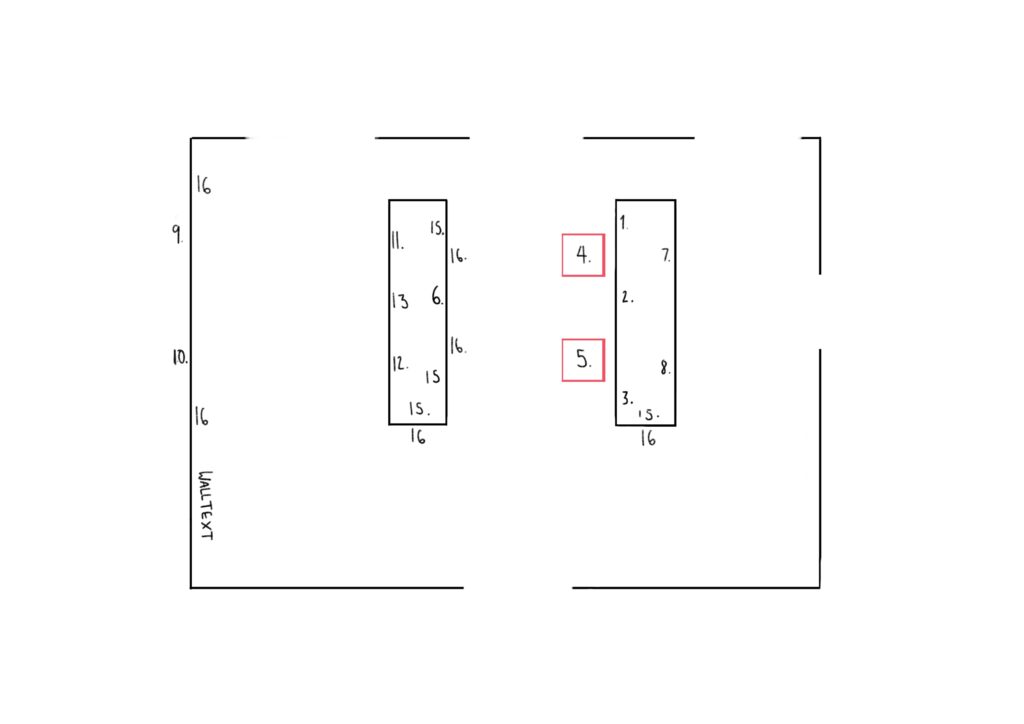
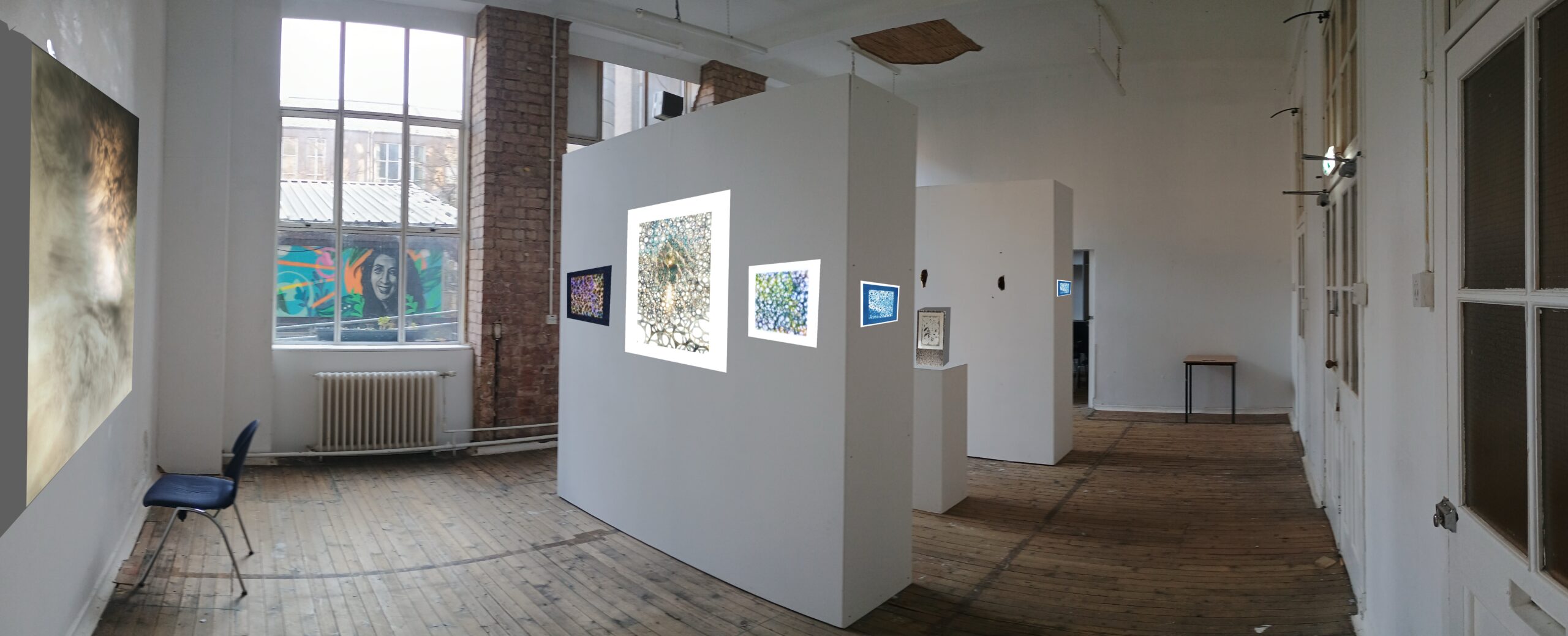


Exhibition Layout 2
Unlike the previous version, the design below is an experiment based more closely on emerging ideas for my Weird Frictions speculative project. Pieces are not gathered based on the artist, instead combining imagery and concepts in a way that allows narrative frictions to emerge. In this version the wall text would be placed on the wall near the entrance, where visitors are unlikely to see it until they have seen the work and begin to take their exit, this will allow visitors to perceive the layout as disjointed or ‘Weird’, only gaining clarity at the end of the exhibition.
Additionally Pieces 14 and 16 (Blue Things and Monuments), which are pieces constructed of multiple individual elements are spread throughout the space. I intend to observe how expanding the pieces throughout the space may make them repeating motifs . Monuments, consisting of multiple found object stones (which I have been unable to render in my first-person superimposed images as a result of scale, and program capabilities), is intended to present stones as continually present hyper-objects (Materials that exist in a timescale beyond human perception, and thus are single material that are constant throughout changing human time periods (Morton, 2013)). Presenting this piece in the form of repeating motifs in the gallery space reflects the status of the stone as an object that repeats throughout time and space. The curation of the piece throughout space becomes an extension of the artwork.
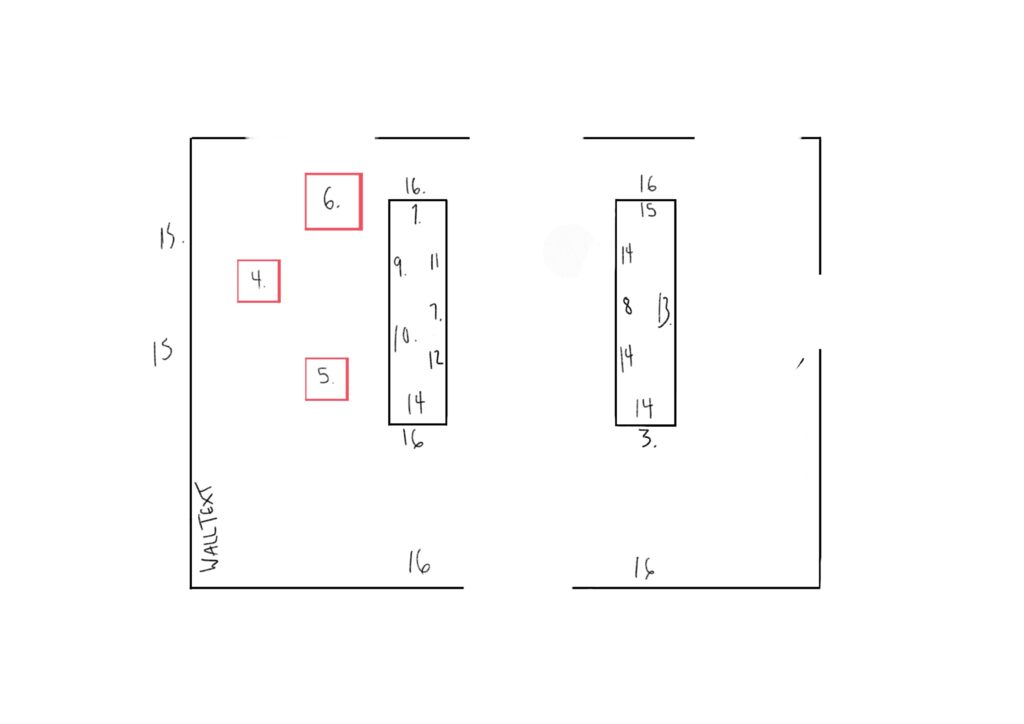
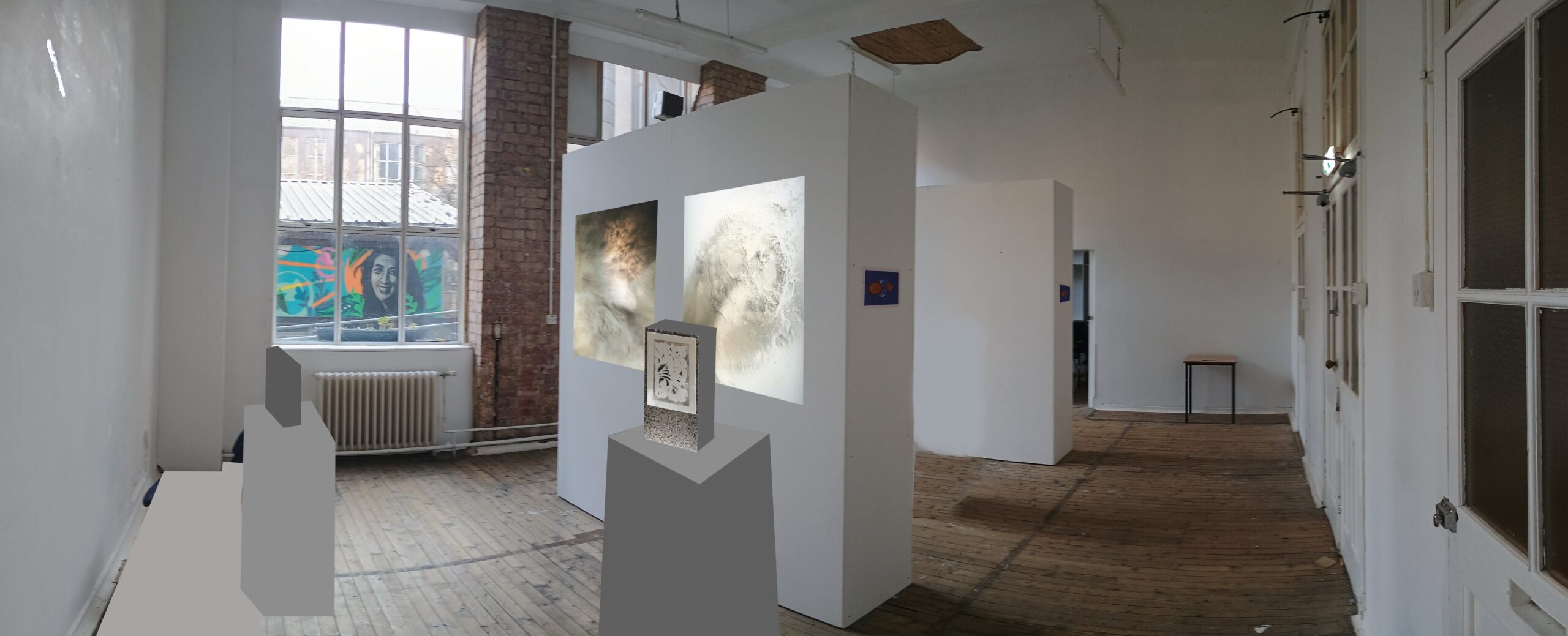


Conclusion
Out of the two imagined presentations I believe that Exhibition Layout 1 is the best for this gallery. Responding to the neutrality of the white space, a more conventional layout emerged, however, it performs Greenblatt’s two interpretation models the best. While Exhibition Layout 2 creates interesting points of contention and extension of the art through non-conventional display, Layout 1 is able to maintain the appearance of art as an individual entity of value, whilst still expressing a relevance to exterior contexts and the work around it. Moving forward with this micro exhibition, I shall focus on the first of the two layouts, and develop this display to include the curatorial design elements of Layout 2 that I found to be successful.
Application to Speculative Project
Within this research I have decided that art should be primarily grouped based on the artist that made them, this is made especially prevalent as all the artists that I aim to include are emerging, and a strong sense of individuality would be best for recognisability and exposure to the public. Further small details like exhibition labels will also be needed. Additionally as I noted above, the incongruent display that I explored in this post may compromise the perception of the included art as individual pieces with value. In my previous post about exhibition themes I mentioned using reciprocity as a methodology, where curation is understood as an intimately connected network of elements. Layouts like that which I display in Layout 2, though creating advanced discourse between pieces, is not mutually constructive, and does not elevate the work of the individual in equal measure. This was restricted, in part, by the white cube nature of the In Vitro gallery. Within the Strange Field space for my speculative project, I believe that a more experimental design, that maintains artist agency will be possible.
Bibliography
- Borsotti, M. (2020). A Brief Journey through Definitions of Contemporary Exhibition Design: From Display to Narrative and Back. The International Journal of Architectonic, Spatial, and Environmental Design, 14(2), pp.55–66.
- Greenblatt, S. (1990). Resonance and wonder. In Exhibition Cultures: The Poetcs and Politics of Museum Display, 43(4), pp.232–262.
- Macdonald, S. (2007). Interconnecting: museum visiting and exhibition design. CoDesign, 3(1), 149–162.
- Morton, T. (2013). Hyperobjects: Philosophy and Ecology After the End of the World. Minneapolis: University Of Minnesota Press.
- Rogers, N. (1952). Architecture, Human Measure, Two Exhibition Projects by Albini. Domus, 20(21), pp.276–277.



